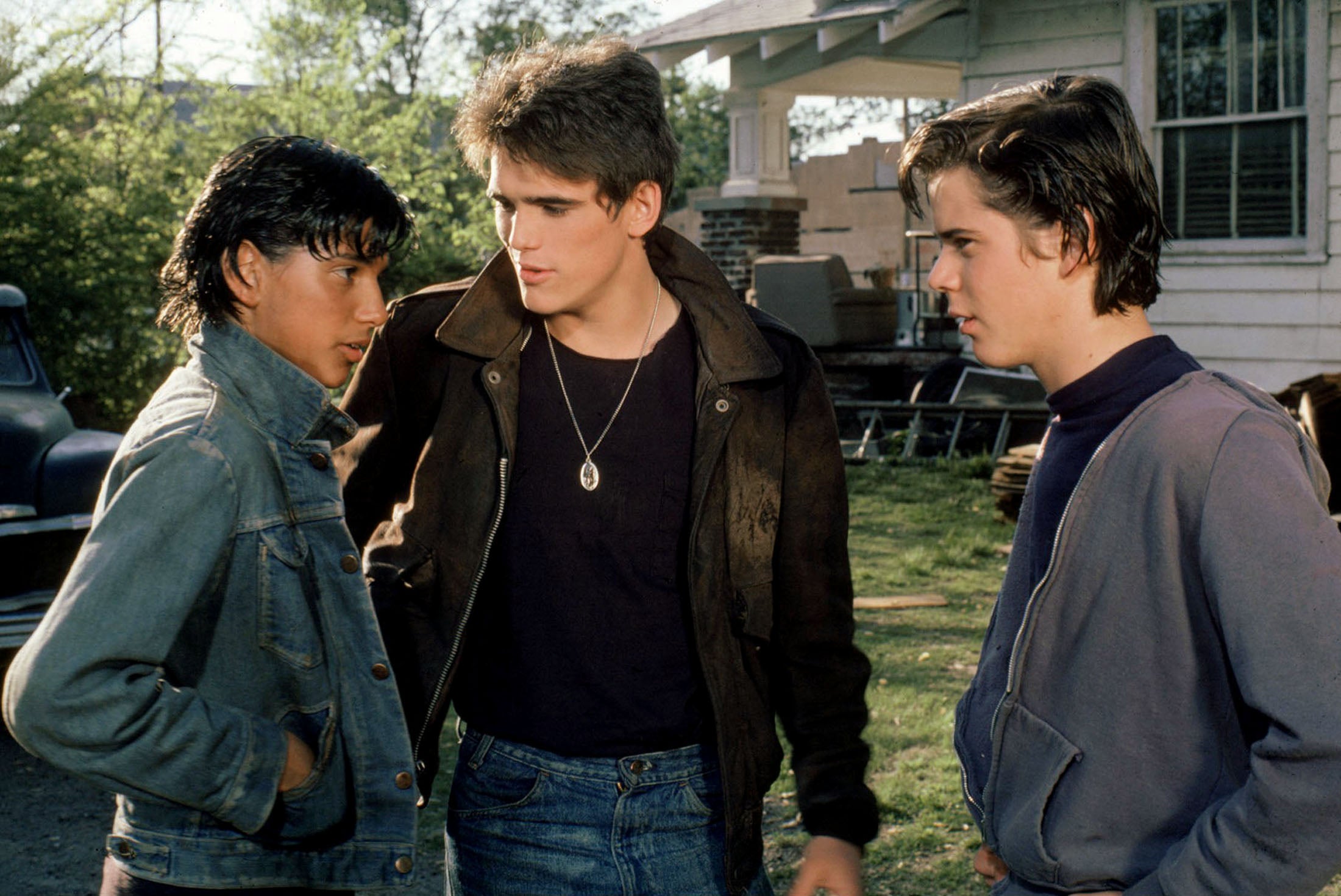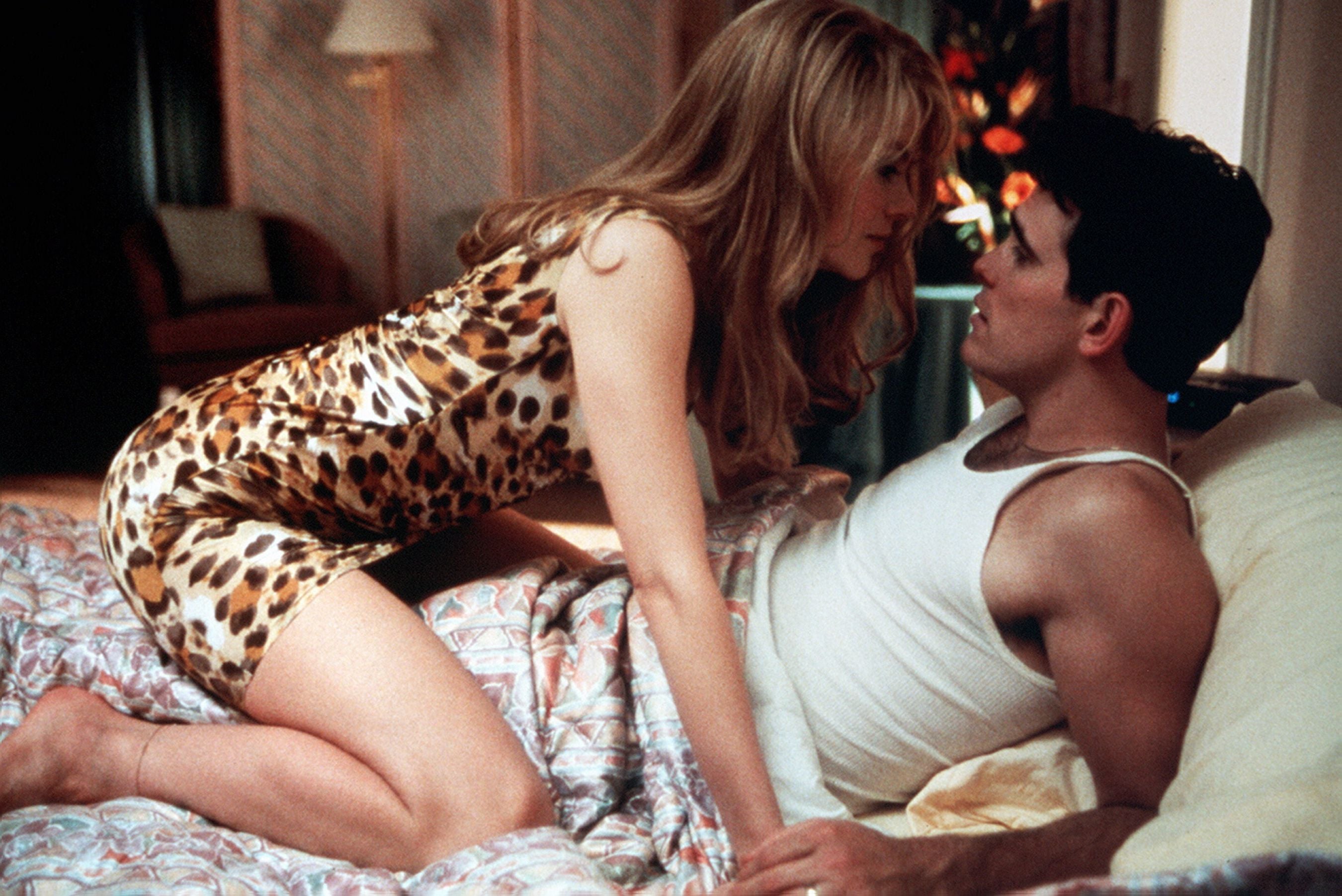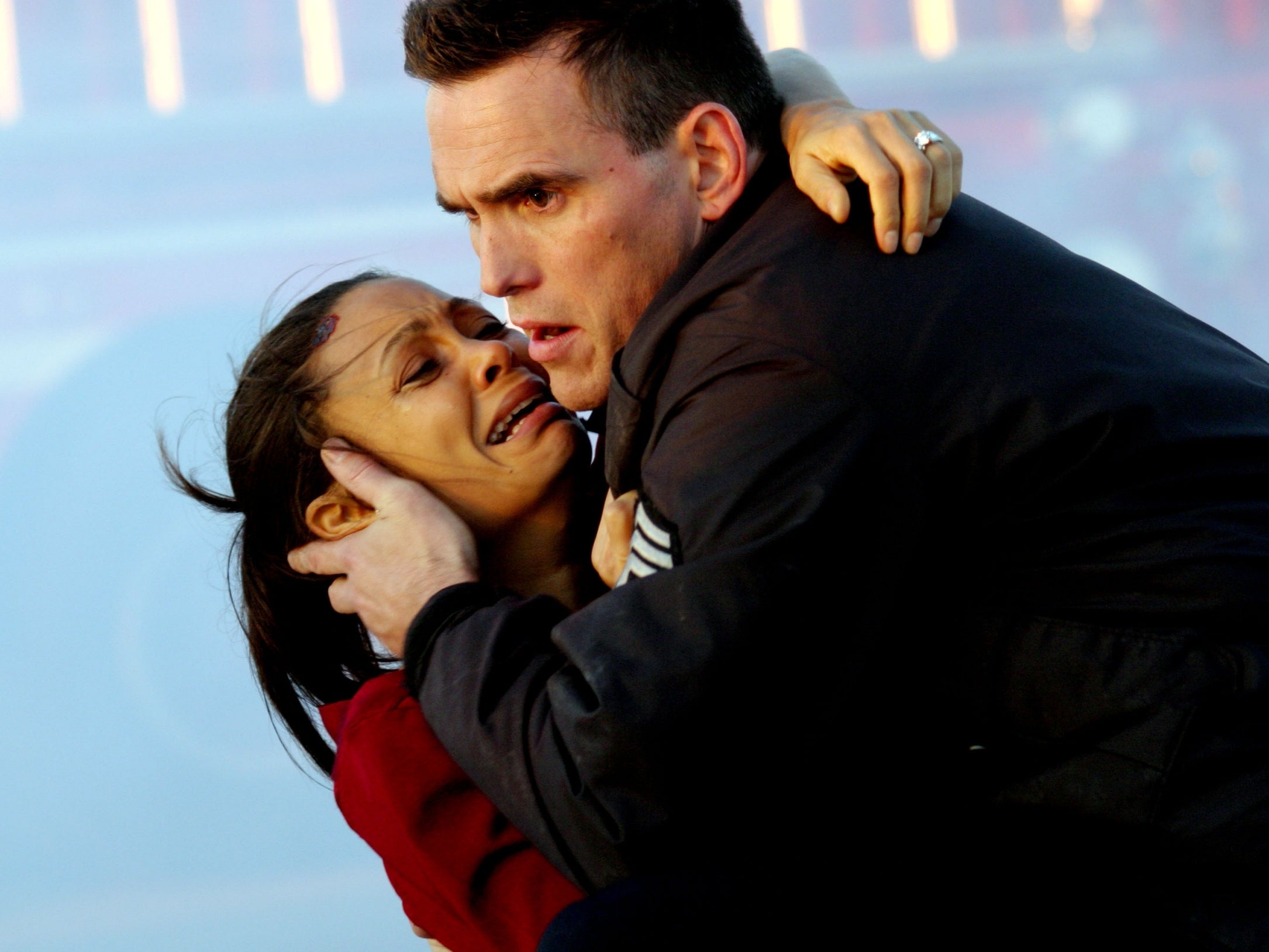Matt Dillon had the edge on Tom Cruise and Rob Lowe, so why has his career languished in comparison?
Once heralded as the ‘James Bond of his era’, Dillon never rose to the prominence that was expected of him, says Geoffrey Macnab, but perhaps the actor’s greatest success was eschewing the limelight early fame afforded him – even if he did so to the detriment of his career

Cinema’s rebellious outsiders tend to have a short shelf life. We can only guess what kind of career James Dean might have enjoyed had he still been working in his old age. Dean died in a car crash aged 24 in 1955. His fellow method star Montgomery Clift made it into his mid-forties before a fatal heart attack in 1966. Zbigniew Cybulski, the legendary leather-clad maverick of Polish post-war cinema, was in his thirties when he accidentally killed himself trying to jump on a speeding train on the set of one of his films.
One young rebel, though, who has continued acting well into middle age is the US star Matt Dillon. At the start of his career in the early Eighties, Dillon was regularly described as the James Dean of his era. He was mercurial, and very intense. Andy Warhol spoke of his “staggering good looks”.
Directors such as Francis Ford Coppola and Gus Van Sant turned to Dillon when they wanted to cast delinquents or gang leaders with a bit of charisma and swagger. He played bullies and jocks, but he did so with a soulful quality that meant audiences rarely took against him. Tom Cruise and Rob Lowe were his equally youthful co-stars in Coppola’s The Outsiders (1983) but Dillon’s was the face the camera loved. They paled in his presence.
The now 58-year-old actor – who is receiving a lifetime achievement award at the Locarno Festival next month – lived fast without dying young. As years passed, however, his mystique slowly diminished. Whereas Cruise remains the forever-young Peter Pan-like hero of Top Gun and Mission: Impossible, Dillon, who had a gravitas that Cruise lacked, has become a marginal figure. It has been several decades since teenage fans hung his poster on their walls; since he was considered one of the most bankable young stars in Hollywood. His very steamy Florida-set thriller Wild Things (1998) may have inspired an episode of cult comedy series PEN15, but that was one of the very few recent acknowledgements of the status he once had.
In a way, Dillon got what he wanted. He spent much of his early career trying to avoid being typecast as the handsome, hunky all-American hero. “I don’t want to get stuck in the leading man kind of thing… I’d just like to get really good, juicy character parts,” he told the New York Times in a 1983 interview given when he was still a teenager. Even then, his interviewer picked up on the actor’s “acute embarrassment” over his status as a “heart-throb”. These days, Dillon is as likely to play serial killers and racist policemen as he is conventional romantic leads. He works frequently outside Hollywood: for example, collaborating with Danish director Lars von Trier (on 2018’s The House that Jack Built). He is a contradictory figure, a movie star whose first instinct is generally to shy away from the limelight.
European directors are still drawn to him. French filmmaker Fred Garson recently cast Dillon as the hardboiled but emotionally vulnerable Chicago novelist Nelson Algren (author of The Man with the Golden Arm) in his new project, An Ocean Apart. The film is about Algren’s torrid affair with Left Bank writer Simone de Beauvoir (Charlotte Gainsbourg). Hoping to shoot later this year, Garson was put in touch with the American actor by Spanish producer Rosa Bosch. On casting Dillon in the role, Garson told The Independent, “She [Bosch] is really into South American music and I knew Matt Dillon has got one of the best collections of Cuban music.” In 2020, Dillon directed a 2020 documentary about Cuban singer, Francisco Fellove Valdés. Garson is sure the actor will make an ideal Nelson Algren. “He started as the bad boy. He carries that bad guy with good heart [feeling]. Even when he is working with Lars von Trier in a film about a killer, we can see humanity… he’s an American guy with a European state of mind.”
Norwegian filmmaker Bent Hamer concurs. He directed Dillon in Charles Bukowski adaptation, Factotum (2005), in which the actor portrays Bukowski’s fictional alter ego, Henry Chinaski. That’s to say, he played a womanising, self-destructive, alcoholic writer who lived like a vagrant. “For him, it was a risk,” Hamer says of the challenge the one-time Hollywood teen idol faced in taking on such a burnt-out case. Dillon, though, threw himself into the role, visiting strip joints as part of his research and meeting Bukowski’s widow, Linda Lee Bukowski, who thoroughly approved of his performance, “Also, I like his voice very much. He’s a very good reader,” Hamer says of Dillon’s laconic delivery. “I really wanted to use some of Bukowski’s poems. Before we started shooting, I took him to a studio and we recorded a few poems that I liked a lot.”
Dillon was 14 when he starred as the delinquent anti-hero of Jonathan Kaplan’s Over the Edge (1979). The casting director Vic Ramos (who later became Dillon’s manager) discovered the young actor when he was a brawling, cigarette-smoking 14-year-old playing truant from school in New York. According to Rolling Stone magazine, Dillon turned up to the audition “soaking wet, with his shirt ripped” and “two busted front teeth”, arriving straight from his latest fight. “I was a little wild and on a course for misspent youth,” the actor has said of his troubled adolescence.

Kaplan’s film was about disaffected kids (“old enough to know better but too young to care”, as the publicity proclaimed) wreaking havoc in New Granada, a middle-class suburb in Colorado. The director quickly decided that the young wastrel Dillon was perfect for such a movie. Reviewers found many of the actors playing the renegade kids to be awkward and mannered. These weren’t professionals, after all. They were adolescents playing adolescents. However, even the most grudging critics acknowledged that Dillon was a natural as Richie White, his character from the wrong side of the tracks.
In the process, Dillon discovered a love for acting. The teenage bruiser began taking classes at Lee Strasberg’s Institute, home of the “method”. He started watching old James Dean, Montgomery Clift, and Marlon Brando movies. “That was the triumvirate: Brando, Clift and Dean,” the actor told Deadline in a recent interview, as if they were the holy trinity. Their influence clearly rubbed off. Coppola heralded Dillon as one of the “best young actors” since Brando and Dean.
Dillon, though, wasn’t quite the same as either of them. You don’t find many scenes in his films comparable to the moment in Rebel Without a Cause in which Dean’s emotionally strung-out Jim Stark yells in anguish at his father, “You’re tearing me apart!” Instead, Dillon’s young anti-heroes have always had a laidback quality. You rarely felt he was baring his soul. He may have been playing rebels, but they remained on a very even keel. They weren’t neurotic misfits.

Even Dillon’s villains tended to have redeeming qualities. In the Oscar-winning Crash (2004), it doesn’t come as a surprise when his obnoxious police officer suddenly turns selfless and heroic, rescuing the same woman (Thandiwe Newton) that he had earlier humiliated and sexually harassed from a burning car. Sometimes, his characters were dim-witted, but they were almost always likeable. Dillon had a flair for comedy and didn’t mind being the butt of the joke. In the Farrelly brothers’ outrageous comedy There’s Something About Mary (1998), he played Pat Healy, the sleazy private investigator with a wraparound smile who flirts with the woman (Cameron Diaz) he is supposed to be tracking down. A more self-conscious star might have felt embarrassed about the scene in which he gives mouth-to-mouth to a pet dog, but Dillon carries it off with perfect comic elan, as if locking lips with a mutt was second nature to him.
Dillon was equally good as the hapless, soon-to-be murdered husband of Nicole Kidman’s ambitious, celebrity-obsessed TV weather reporter in Gus Van Sant’s To Die For (1995), and as the charismatic thief and dope fiend in Van Sant’s Drugstore Cowboy (1989). “He is one of the best actors working in movies. He possesses the secret of not giving too much, of not trying so hard that we’re distracted by his performance,” critic Roger Ebert once enthused. Ebert praised Dillon for leaving his time as a teen idol behind him to instead choose “interesting roles and good directors”. For Dillon’s career, though, this spelt trouble. One of the most bankable stars of the 1980s began losing his commercial appeal. He didn’t do big-budget action films or superhero movies. And because Dillon was no longer a marquee name, financiers wouldn’t take a chance on his more outlandish projects.

As part of its tribute to the actor, Locarno is screening City of Ghosts (2002), which remains Dillon’s only dramatic feature as a director. A dark tale about shady American con artists and crooked business executives on the run in Cambodia, it was partly inspired by Carol Reed’s adaptation of Joseph Conrad’s Lord Jim. Dillon starred in and co-scripted the film. He spent over six years getting it financed and shot it on location, but it wasn’t a hit (although it does enjoy a cult status today).
A few days ago, Dillon sat at a lowly 2237 on IMDb’s STARmeter list, a ranking that suggests he has almost completely fallen out of public consciousness. This is extraordinary for an actor who, in the 1980s, was among Hollywood’s most recognisable figures. While Cruise, who used to play second fiddle to him, endures as one of the world’s biggest box office draws, Dillon now languishes in near obscurity. Not that he is complaining. More than 40 years after his screen debut, his continuing outsider status only adds to his credibility. James Dean didn’t need fighter jets or explosions to show that he could act – and nor does Dillon.
Join our commenting forum
Join thought-provoking conversations, follow other Independent readers and see their replies
Comments


Bookmark popover
Removed from bookmarks